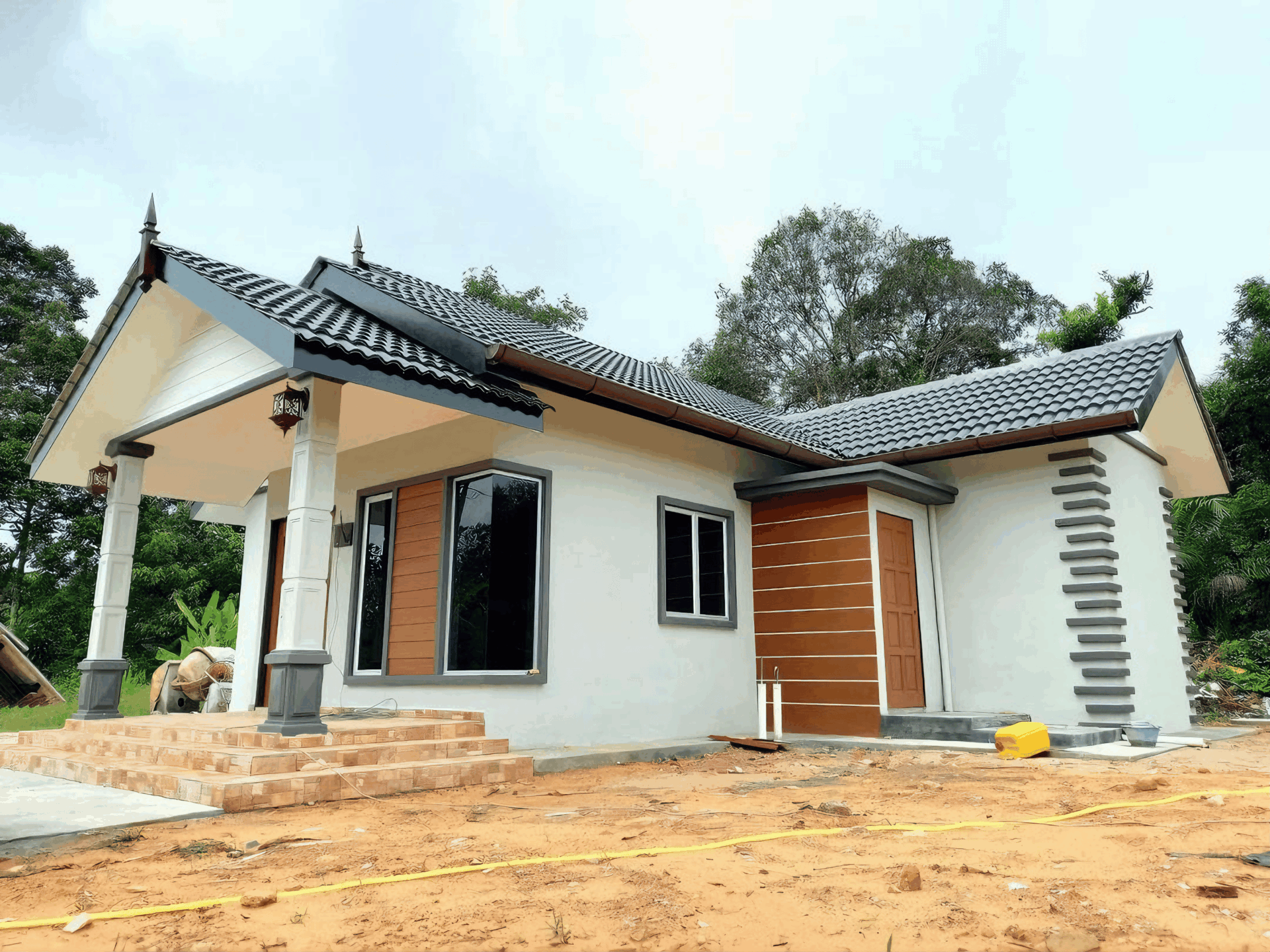When it comes to construction in Malaysia, one thing is clear: it’s more than just laying bricks and mortar. It’s a whole process that involves planning, coordination, and a sprinkle of magic to turn blueprints into reality. Enter project management—the unsung hero of the construction world. Whether you’re building a cozy home, a bustling shopping center, or a state-of-the-art skyscraper, effective project management is like the compass that keeps everything on track. It ensures that timelines are met, budgets are adhered to, and quality is never compromised. In this article, we’ll dive into why project management is absolutely essential for successful construction projects in Malaysia, exploring how it brings order to the chaos and helps turn ambitious visions into tangible accomplishments. So, grab a cup of kopi, and let’s get into it!
The Importance of Strategic Planning in Construction Projects
Effective planning is crucial for navigating the complexities of construction projects. In Malaysia, where rapid urbanization meets diverse regulatory environments, a strategic approach can significantly impact outcomes. A well-structured plan not only outlines timelines and costs but also identifies potential risks, ensuring that stakeholders remain informed and engaged throughout the process. This clarity prevents costly overruns and delays, aligning everyone’s expectations and fostering collaboration.
One of the vital components of strategic planning is resource allocation. Understanding which materials, technology, and workforce are needed at specific stages enables teams to operate efficiently. By balancing time, budget, and quality, project managers can devise a framework that accommodates unforeseen challenges without derailing the entire project. This level of foresight allows for quicker decision-making, reducing downtime and enhancing overall productivity.
Moreover, strategic planning lays the foundation for effective communication among all parties involved—from developers and contractors to suppliers and local authorities. By establishing clear lines of communication, misunderstandings can be minimized, and issues can be addressed swiftly. A positive collaborative environment not only boosts morale but also cultivates a sense of ownership among team members, ultimately leading to a more successful project completion.

Embracing Technology for Enhanced Project Management Efficiency
In today’s fast-paced construction landscape, leveraging technology is a game-changer for project management. By integrating digital tools into the construction workflow, teams can easily track progress, manage resources, and enhance collaboration. Imagine being able to visualize the entire project lifecycle through virtual models or utilizing project management software to assign tasks and deadlines. This not only minimizes the risk of errors but also fosters a culture of transparency and accountability among team members.
Embracing technology also means harnessing data analytics to make informed decisions. With real-time data at their fingertips, project managers can assess timelines, costs, and performance indicators on-the-go. This capability allows for proactive risk management; identifying potential setbacks before they spiral out of control. Key benefits include:
- Increased Accuracy: Reduce human error with automated processes.
- Cost Savings: Optimize resource allocation and cut unnecessary expenses.
- Enhanced Communication: Keep everyone on the same page with instant updates.
To put numbers to the advantages, consider the impact of technology on project timelines and budgets. Below is a simplified table showcasing potential benefits by incorporating technology into project management practices:
| Metric | Traditional Method | Tech-Enhanced Method |
|---|---|---|
| Average Project Delay | 30% | 10% |
| Cost Overruns | 25% | 5% |
| Team Satisfaction | 60% | 90% |
By adopting these innovative solutions, the Malaysian construction sector can not only boost efficiency but also drive sustainable development. Whether it’s using drones for site inspections or project management apps that sync with teams in real-time, the future of construction is undeniably digital. The sooner businesses embrace this change, the more they can set themselves apart in a competitive market.

The Role of Communication in Construction Success
In the bustling world of construction, effective interaction is more than just nice-to-have; it’s a game changer. When teams—ranging from architects and engineers to contractors and clients—can share ideas freely, innovation flourishes. Key benefits of great communication in construction include:
- Enhanced Collaboration: Different stakeholders can align their visions, making collaborative efforts more seamless.
- Quick Problem-Solving: Issues arise, but with open lines of communication, solutions can be implemented quicker than ever.
- Improved Safety: Clear instructions and feedback can reduce on-site accidents significantly.
Moreover, technology plays a pivotal role in bridging communication gaps. With tools like project management software, real-time updates streamline workflows. These platforms enhance transparency by allowing all parties to access essential data instantly. A brief comparison of traditional methods versus digital communication tools illustrates this shift:
| Method | Advantages | Disadvantages |
|---|---|---|
| Traditional (Emails/Meetings) | Personal Touch, Detailed | Time-Consuming, Potential Miscommunication |
| Digital Tools (Software) | Immediate Updates, Easy Tracking | Requires Internet Access, Learning Curve |
fostering a culture where feedback is welcomed makes all the difference. Constructive criticism and praise lead to improvement and morale boosts, transforming the workplace into a thriving environment. Embracing communication as a core value not only aids in effective project execution but establishes your team as a well-oiled machine ready to tackle any challenge that comes its way.

Risk Management Practices to Mitigate Challenges in Malaysian Construction
Construction projects in Malaysia often face a variety of risks, which can lead to delays, cost overruns, and compromised safety. To effectively tackle these challenges, adopting a robust risk management framework is crucial. By identifying, assessing, and mitigating potential risks early in the project lifecycle, project managers can significantly enhance the success rate of construction endeavors. Essential components of an effective risk management strategy typically include:
- Risk Identification: Regularly brainstorm and document potential risks that could impact the project.
- Risk Assessment: Evaluate the likelihood and consequences of identified risks to prioritize them accordingly.
- Mitigation Plans: Develop actionable plans to minimize the impact of high-priority risks.
- Monitoring: Continuously track risks throughout the project to adapt strategies as needed.
Another vital practice is involving all stakeholders in the risk management process. Collaborating with contractors, suppliers, and consultants ensures a more comprehensive understanding of project risks. This collective insight can lead to more innovative solutions and foster a culture of transparency. Regular meetings and updates keep everyone on the same page, reinforcing team cohesion and commitment to shared goals. A well-structured approach might look like this:
| Stakeholder | Role in Risk Management |
|---|---|
| Project Manager | Coordinates risk management activities and oversees implementation. |
| Contractors | Provide insights based on site conditions and execution strategies. |
| Suppliers | Alert project teams about supply chain risks and material availability. |
| Consultants | Advise on compliance and best practices to mitigate legal and environmental risks. |
leveraging technology can propel risk management practices to a new level. Automation tools and risk management software can help streamline processes, provide real-time data, and enhance decision-making capabilities. Utilizing Building Information Modeling (BIM) allows for effective visualization and analysis of potential risks before they manifest on-site. By embracing these digital innovations, Malaysian construction firms can not only mitigate risks more efficiently but also position themselves as industry leaders ready to embrace future challenges.

Budgeting and Cost Control: Ensuring Financial Viability
Successfully managing a construction project in Malaysia goes beyond just planning; it involves keen budgeting and robust cost control strategies. Understanding your project’s financial landscape is paramount. This means forecasting potential expenses accurately and identifying all cost contributors—materials, labor, permits, and unforeseen contingencies. By creating a detailed budget that outlines these areas, project managers can foresee financial bottlenecks before they escalate. An active approach to monitoring spending ensures that every ringgit is utilized wisely, allowing for adjustments when necessary.
Implementing cost control measures is essential to maintain the financial viability of any construction endeavor. Regularly comparing actual expenditures against the projected budget helps in tracking performance. Here are some effective strategies to consider:
- Conducting periodic performance reviews
- Utilizing project management software for real-time budget tracking
- Engaging in proactive communication with suppliers to negotiate better rates
- Setting aside a contingency fund for unexpected expenses
To visualize the impact of efficient budgeting and cost control, take a look at the simplified cost allocation table below:
| Cost Category | Budgeted Amount (RM) | Actual Amount (RM) | Status |
|---|---|---|---|
| Materials | 50,000 | 48,000 | On Track |
| Labor | 40,000 | 42,000 | Over Budget |
| Permits & Fees | 10,000 | 10,500 | Minor Overrun |
By consistently applying these financial principles, project managers not only safeguard the project’s bottom line but also instill confidence among stakeholders. A solid understanding of budgeting and effective cost control practices can significantly elevate the chances of a project’s success in Malaysia’s competitive construction market.

Quality Assurance and Compliance: Upholding Industry Standards
In the bustling world of construction in Malaysia, quality assurance is not merely a checkbox; it’s the backbone of every successful project. By ensuring that every material, method, and process adheres to stringent standards, we not only safeguard the integrity of the structure but also protect the investment of all stakeholders. This systematic approach is essential to avoid costly setbacks and maintain a smooth workflow from inception to completion.
Compliance with local regulations and industry standards is paramount. It lays down a framework within which contractors operate, ensuring that safety, environmental sustainability, and quality are not compromised. By embracing a rigorous compliance culture, project managers can:
- Enhance safety protocols on-site
- Streamline regulatory approvals
- Minimize the risk of legal repercussions
The collaboration between project managers, quality assurance teams, and compliance officers fosters an environment of transparency and accountability. Regular audits and inspections form a proactive approach, allowing teams to identify potential issues before they escalate. A well-structured quality assurance program not only boosts morale among workers but also builds trust with clients and investors. A little diligence can go a long way in delivering projects that are on time, on budget, and beyond expectations.

Building Effective Teams and Stakeholder Engagement
Effective teamwork and strong stakeholder engagement form the backbone of successful construction projects in Malaysia. With diverse teams that often include architects, engineers, contractors, and local authorities, it’s crucial to foster a culture of collaboration. By emphasizing communication and clarity, teams can align their goals, ensure everyone understands their roles, and navigate the complexities of the construction landscape smoothly.
Building trust with stakeholders is equally vital. Incorporating their feedback early and often helps to create a sense of ownership and investment in the project. To facilitate this, consider organizing regular stakeholder meetings to address concerns, share progress updates, and celebrate milestones together. Engaging stakeholders can take many forms, such as:
- Feedback sessions
- Workshops or design charrettes
- Site visits and demonstrations
Tools such as collaborative platforms and project management software allow for seamless communication, documenting changes and fostering transparency. Here’s a quick comparison of popular tools that can help enhance teamwork and stakeholder engagement:
| Tool | Features | Best For |
|---|---|---|
| Asana | Task tracking, project timelines, collaboration | Small to medium teams |
| Trello | Visual boards, customizable workflows | Creative teams, agile projects |
| Microsoft Teams | Chat, video conferencing, file sharing | Large organizations, remote work |

Sustainable Practices in Project Management for Long-Term Success
Incorporating sustainable practices into project management is essential for ensuring that construction projects not only meet immediate goals but also contribute positively to the environment and community. By adopting strategies such as green building materials, energy-efficient designs, and waste reduction initiatives, project managers can enhance the overall sustainability of their projects. These practices not only minimize the ecological footprint but also offer significant cost savings over time, making them a smart choice for developers and investors alike.
Furthermore, embracing sustainability in project management encourages collaboration among stakeholders, including clients, contractors, and local communities. When all parties are aligned on sustainability objectives, it fosters a sense of responsibility and ownership over the project’s outcomes. Techniques like regular sustainability workshops, transparent communication regarding environmental impacts, and community engagement sessions can help create this essential synergy. It turns the construction project into a community initiative that aims not just for completion, but for holistic development in line with the Malaysian government’s vision for sustainable growth.
| Benefits of Sustainable Practices | Description |
|---|---|
| Cost Efficiency | Reduces long-term expenses through lower energy bills and resource conservation. |
| Enhanced Reputation | Attracts environmentally-conscious clients and investors, boosting brand credibility. |
| Regulatory Compliance | Meets or exceeds governmental regulations on environmental protection. |
| Community Well-being | Improves the local environment and enhances the quality of life for residents. |
By treating sustainability as a core component of project management, construction firms in Malaysia can ensure that their projects are not only successful in the short term but also resilient and beneficial in the long run. This approach encourages innovation, as firms are inspired to seek out new technologies and methodologies that align with environmental goals. The commitment to sustainable practices within project frameworks not only bolsters the industry’s reputation but significantly contributes to the nation’s efforts to build a greener future.
Insights and Conclusions
As we wrap things up, it’s clear that project management isn’t just a fancy term thrown around in boardrooms. In the Malaysian construction scene, it’s the secret sauce that can turn an ambitious vision into a stunning reality. From keeping budgets in check to navigating the twists and turns of regulations, having a solid project management game plan can make all the difference.
As construction trends evolve and new innovations pop up, embracing effective project management will help ensure our projects don’t just meet expectations, but exceed them. So whether you’re a seasoned pro or just starting out in the construction world, remember: great project management is your best friend on the road to success. Here’s to building a brighter, more efficient future in Malaysia’s construction landscape!







